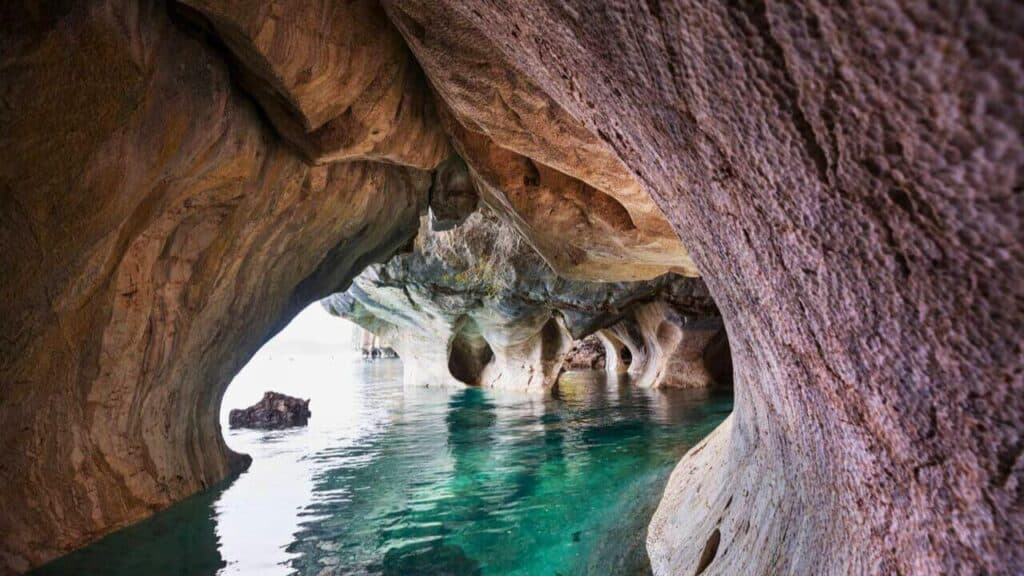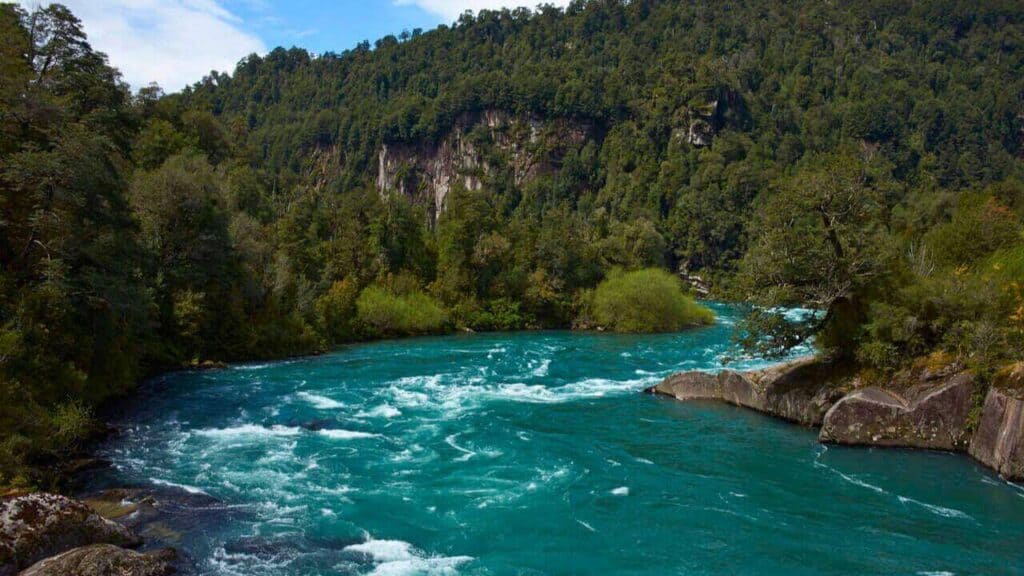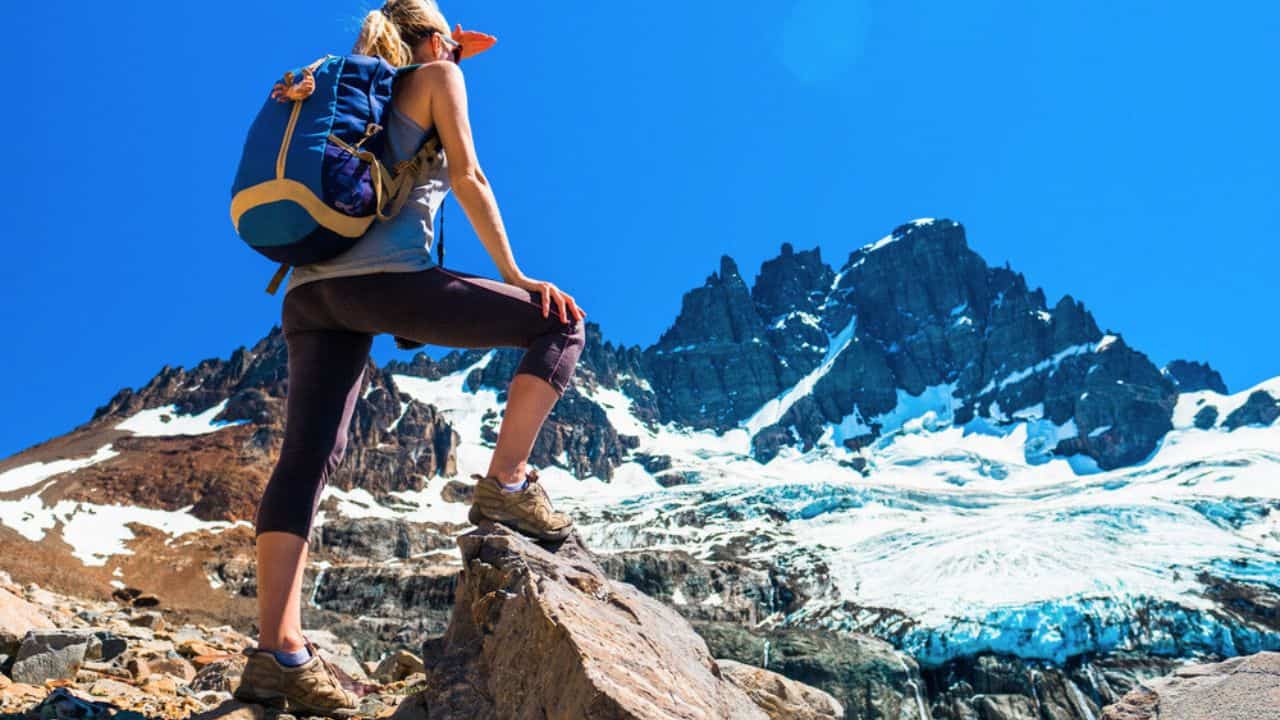Trying to decide which part of Patagonia is better to kick off your bucket list vacation? Here’s a brief guide to make the most of your Patagonia travel.
Patagonia is a vast 260,000 square miles (673,000 square kilometers) region at the bottom of South America, encompassing roughly 90% of southern Argentina and 10% of Chile. Its diverse geography has a wide range of fascinating plateaus, plains, fjords, rainforests, volcanoes, deserts, steppes, glaciers, rivers, and lakes, shaping its gorgeous landscapes, amazing flora, and fauna, making it very attractive to travelers.
And with so many tourists to interact with in this popular destination, Patagonia offers a safe environment.
This country’s sheer size and wondrous beauty make planning an itinerary more important than ever. Don’t worry! This article will fill you in on the basic things you need to know before visiting Patagonia, such as the best timing, logistics, accommodations, activities, and other information that could make or break your dream trip.
Let’s begin!
Best Time To Go To Patagonia
There is no definitive best time to go to Patagonia because every month attracts a different audience. The following are the activities that attract particular audiences at various times of the year.
For Hiking, Penguin-Sighting, and Whitewater Rafting
People interested in these activities should visit Patagonia from December to February. During this period, you will have warm weather with 18 hours of daylight to witness the beautiful scenery, enjoy Patagonia hiking, and experience whitewater rafting on the rapids of Futaleufu.
Millions of penguins also swim all over the ocean to breed on the coast of Patagonia. They stay until the middle of March, and if you look closer, you may see little chicks feeding in the nests.
For Photography
The months of March until mid of April (known as the shoulder period) are the ideal time to be outside and enjoy nature. It is because the trees turn reddish brown, and the winds calm down during these times.
The reddish-brown trees with sunlight and high mountain peaks may give you the best clicks of the trip, so make sure you explore as much as possible during the day!
For Winter Sports
From May until October, the southern mountain ranges are covered with snow, which makes it difficult to visit the southern part of Chilean and Argentinian Patagonia.
However, if you have been to Patagonia several times in winter or have the will to enjoy severe snow, you may still go snow-shoeing in Torres del Paine National Park.
You can also travel to Ushuaia, the southernmost city in the world, to hit the steepest slope at the southernmost ski resort.
How To Get To And Around Patagonia
Patagonia is easily accessible by car or bus from 2 of its cities, Buenos Aires in Argentina and Santiago in Chile. If you plan to visit Patagonia, you should land either at Santiago International Airport in Chile or Ezeiza International Airport in Argentina.
Traveling From Buenos Aires, Argentina
If you take the bus from Buenos Aires to Puerto Madryn, located in Atlantic Patagonia, the ticket price varies from 18,502 to 37,002 Argentine pesos (50-98 US dollars). Book your ticket in advance if you want your ticket to be low-cost.
Transportation by car and bus will give you an exhilarating experience of the mountains and the beauty of Patagonia. Several bus services are available inside Patagonia and other cities if you want to visit ski resorts.
Traveling From Santiago, Chile
Booking a rental car will cost you around 37,002 to 55,502 Chilean pesos ($46 to $70), which is tiring as you will have to travel for around 27 to 28 hours.
Traveling from Santiago, Chile to Patagonia by bus will cost you: 79,681-127,490 CLP ($100-$160); it is also comparatively faster (approximately 25 hours and 44 minutes) and much more suitable for the landscape of Patagonia.
What To Pack For Patagonia
If you are traveling to Patagonia, the southernmost region of the world, you should have a clear idea of the expected environments to pack smartly and enjoy your trip without any regrets.
Depending on your day-to-day routine, hiking activities, and camping plans, the essential stuff you need to pack should include the following:
- Clothes
- Gloves
- Beanie
- Rain- and wind-proof jacket
- Wool socks
- Fleece
- Hiking poles
- Shirt and pants
- Tent
- Sleeping bag
- Lighter
- First aid kit
- Charger
- Cooking pot
- Plastic bags
- Backpack
Accommodations in Patagonia
Patagonia is a well-known tourist spot in the world, and there are many hotels, camps, and cruises to accommodate visitors. These accommodations are spread over Chile and the Argentinian plains.
Hotels
If you are late booking your hotel, you shouldn’t be worried about it because Patagonia has a lot of hotels where you can crash in. Here are some options you should prioritize when looking for a hotel.
Located in Torres del Paine, Chile, Rio Serrano Hotel is known for the quality of service it delivers to its customers. With an on-site restaurant and a garden overlooking the Paine Massif, it is considered a luxury hotel that gives customers great value for money.
Campsites
Camping might be the best way to spend the day in Patagonia during summer. You can experience sunrise and sleep under the sky while watching the bright stars. Camping gives you a cheaper and more enjoyable experience.

Los Glaciares National Park, one of the most beautiful parks in Patagonia, is surrounded by mountain peaks and sky-blue lakes. You can camp at the mountain village of El Chalten, the main entry point to this park; several accommodation options are also available.
If you cannot make it to Los Glaciares National Park, you should aim to find a camp in Tierra Del Fuego National Park.
Tierra del Fuego was a gateway to lakes, waterfalls, and meandering rivers. You enter the park through Ushuaia, the southernmost city in the world, and can find several basic camps installed there.
However, the wild camping in this park is worth spending time on.
Hostels
Oshovia Hostel is a small hostel run by a family in Ushuaia. The hostel provides a friendly environment for customers, which makes the customers prefer staying here. The hostel is located in the center of Kuanip Street, allowing easy access to supermarkets, fast food, bus stops, and shops.
If you are in Chile, you can stay at El Patagonico Hostel, a high-end, family-run hostel that provides high-quality service, giving you a warm and relaxing atmosphere. They alo offer free wifi, social rooms, a self-catering kitchen, and tours with regional guides.
For more accommodation options, you may click on the map.
Patagonia Trip Costs
Several factors affect the cost of a trip to Patagonia, which includes what country you come from (as it affects currency exchange and airfare expenses) and how luxurious you want your trip to be.
It is estimated that 18,850 ARS ($50) is a livable daily budget in Patagonia, but this is when you live in cheap dorm-style accommodation. Add to this your transportation expenses; if you plan on making trips to nearby cities, for example, from Ushuaia to El Calafate, a long bus trip for around 16 hrs will cost you 13,876 ARS ($36).
Along with the traveling cost, you will have to pay fees for entering national parks, which will cost you 5,550-7,400 ARS ($15-$20). So, if you add up the cost of traveling and living, then it is estimated that you will need around 370,010 ARS ($981) for your monthly expenses in Argentinian Patagonia.
While the travel costs in Chile are higher, their exchange rate is less favorable compared to Argentina. While we don’t know how long the dollar blue situation will stay in Argentina, at this moment, it will be significantly more economical to spend as much time as you can on the Argentinean side of Patagonia.
Note: When traveling to Argentina Patagonia, your travel costs will be notably lower. This is because they have a secondary exchange rate when you exchange dollars for their local currency.
Want to make sure you use this higher exchange rate? Use Western Union to get your money, and pay everything in cash.
15 Best Things To Do in Patagonia
Patagonia is one of the world’s most vast and diverse land. You cannot cover the whole of Patagonia even if you plan your trip for 2 to 3 months.
Here are 15 wonderful activities you can do in Patagonia which will make your trip memorable for a long time.
1. Go Hiking

Torres del Paine is home to stunning hiking trails and breathtaking viewpoints.
One of Patagonia’s most famous hiking parks, it has 2 famous trails, O-circuit and W-trek. The latter is more popular because it is easily accessible.
2. Spelunk at the Marble Caves

These Marble caves carved by water are made of solid marble, and the caves’ interior features stunning designs. The caves are located near the large village of Chile Chico.
Even if the Marble Caves can only be accessed by boat, kayak, or ferry, many tourists still enjoy this aquatic adventure.
3. Marvel at the Glaciers
The Perito Moreno Glacier is the most famous out of the 48 on the Patagonia ice field. It is also the third-largest ice field and one of the last ones growing as time passes.
A Perito Moreno Glacier tour includes a scenic expedition, glacier trekking, and a remarkable boat cruise. You will be able to experience the glacier from up close, making sure that you will hear the dramatic noises and see part of the glacier collapse in the water.
4. View King Penguin Colonies
Sighting king penguins, the world’s second-largest penguin, is a rare treat in Patagonia. The only place you can see king penguins is on Tierra del Fuego, which is split between Argentina and Chile.
If you wonder where you can see these penguins, go to Punta Arenas in Chile or Ushuaia in Argentina, where you can find these penguin colonies.
5. Get a Rush While Rafting

Futaleufu is Chile’s most beautiful region. It is surrounded by forests and rivers of Patagonia’s north. Some tourists only plan to visit this part of Patagonia, which tells you how beautiful this region is.
Futaleufu is widely recognized as a top destination for whitewater rafting and is considered one of the safest locations for the activity. It has earned a reputation as one of the world’s premier whitewater rafting locations.
6. Go Whale Watching
If you want to see whales playing at a close distance, Patagonia has at least 5 spots for whale watching: Punta Arenas, Francisco Coloane Marine Park, Corcovado Gulf, and Valdes Peninsula.
From the shores of Gulfo Nuevo Bay, you can watch over 3,000 whales that come for breeding from February to April.
7. Cross Patagonia by Helicopter
One of the most breathtaking and expensive experiences you can do in Patagonia is watching the Patagonia beauty from the sky by hovering around in a helicopter.
The aerial view is so beautiful that you wouldn’t want to close your eyes.
8. Enjoy Camping
If you enjoy nature, you should camp at Pumalin National Park and experience gazing at the vast skies with sparkling stars above you.
Another thing that attracts tourists is the relatively inexpensive tent rental costs compared to other camping sites.
9. Go Cruising

The cruise takes the scenic route through Patagonia’s remote areas, which takes up to three to four days. The route taken by the cruise allows you to spot wildlife and enjoy stargazing.
Embark on a 5-day journey through Patagonia, starting from Puerto Montt. Immerse yourself in the local culture, connect with nature, and get to know fellow travelers.
10. Eating Lamb Al Asador
There are a lot of places in Patagonia where you can fill in your belly. However, the food item that tops them all is the Lamb al Asador, a Patagonian dish where you cook an entire lamb over a hotbed of coals for four hours. This traditional way of cooking meat is worth a try.
11. Visit a Craft Fair
El Bolson, a town in the southern part of Argentina, is famous for its eye-catching handicrafts. When you enter this town, you can see carved woodcraft and many people working on their art.
If you are interested in such creative work, you should visit El Bolson for its large-scale craft fairs. There is a Pagano Square crafts fair, which you can find in downtown El Bolson.
12. Swimming With Sea Lions
Sea lions are present on the coast of Puerto Madryn; the best part is that you can enjoy the cold water of Golfo Nuevo with them.
The region is home to a diverse range of marine life, including sea lions and various species of whales, making it an ideal destination for wildlife encounters. Participants can get up close and personal with these magnificent creatures, creating memories that will last a lifetime.
13. Go on a Road Trip
Do a road trip on the most famous highway in Patagonia, Ruta 40, which stretches across Argentina. From Bolivia in the north via Patagonia and all the way to Punta Loyola in the east of Argentina, you can enjoy the amazing scenery as you drive.
14. Spend a Day at a Real Estancia
Estancias are Patagonian farms or ranches that form a significant part of the people’s culture and economy.
Have a gaucho (South American cowboy) experience by enjoying horseback riding, eating barbecued meats, exploring fruit orchards, and observing cattle or sheep raising in a rustic environment.
15. Glacier Trekking

Glacier trekking is an experience you should have at least once. Tread carefully as you marvel at the glaciers and waterfalls in Patagonia.
How To Stay Safe In Patagonia?
While exploring the breathtaking landscapes of Patagonia, it’s important to prioritize safety by staying prepared for unpredictable weather conditions, especially if engaging in outdoor activities like hiking or camping. Dress in layers, carry essential gear like maps and emergency supplies, and inform others of your itinerary before embarking on any adventures.
Additionally, consider protecting yourself with travel insurance such as SafetyWing, which can cover medical emergencies, trip cancellations, and other unforeseen incidents during your stay. Use the widget below to snag the perfect policy for your needs and travel with peace of mind knowing you’ve got your back covered, no matter what adventures come your way!
Frequently Asked Questions (FAQS) – Patagonia Travel
What Is the Best Month to Visit Patagonia?
The best time to visit Patagonia is during November and March because the weather is warm with longer days. However, this depends on your interests and what activities you want to do there.
Consider your priorities and check local weather conditions before planning your trip.
Is Patagonia Better in Chile or Argentina?
Argentine Patagonia is considered the better one because it is larger, so you have more places to visit.
Both countries offer unique experiences. There are outdoor activities such as hiking, camping, fishing, and wildlife viewing.
How Much Money Do You Need To Go to Patagonia?
It is estimated that you will need around 18,850 ARS ($50) per person a day. Factor in your transportation expenses, which may vary.
Conclusion – Patagonia Travel
Once you visit Patagonia, you will confirm that it lives up to its reputation as a dream destination for a once-in-a-lifetime adventure.
Make sure you make your reservations and secure all your arrangements in advance for a smooth travel experience. Enjoy and travel safely!
Your Ultimate Travel Guide & Booking Resources
Skyscanner is my trusted ally for booking flights, guiding me to the perfect travel options while making the journey planning process a breeze with its user-friendly interface and extensive search capabilities.
12Go Asia is my ultimate travel companion in Asia, offering the best budget service platform for seamless booking of trains, buses, ferries, and flights, ensuring every adventure unfolds smoothly and effortlessly.
Booking.com is my ultimate lodging partner. It offers many accommodations worldwide and simplifies my travel experiences with its user-friendly platform and unbeatable deals.
Get Your Guide is my go-to for personalized travel experiences, enriching my journeys with unique tours and activities curated to my interests, making every adventure unforgettable and tailored to my preferences.
SafetyWing is my peace of mind on the go, offering comprehensive travel medical insurance with affordable plans and hassle-free claims, ensuring I can explore the world worry-free, knowing I’m protected wherever I roam.
LifeStraw Go Bottle is my trusted hydration companion for outdoor adventures, filtering water on-the-go to keep me safe and hydrated, ensuring every hike or travel experience is worry-free and enjoyable.
Related reads:
Founder of Spark Nomad, Radical FIRE, Copywriter
Expertise: Personal finance and travel content. I’m a full-time traveler, and I’ve been to 49 countries and 5 continents.
Education: Bachelor of Economics at Radboud University, Master in Finance at Radboud University, Minor in Economics at Chapman University.
Over 200 articles, essays, and short stories published across the web.
Marjolein Dilven is a journalist and founder of Spark Nomad, a travel platform, and Radical FIRE, a personal finance platform. Marjolein has a finance and economics background with a master’s in Finance. She has quit her job to travel the world, documenting her travels on Spark Nomad to help people plan their travels. Marjolein Dilven has written for publications like MSN, Associated Press, CNBC, Town News syndicate, and more.

